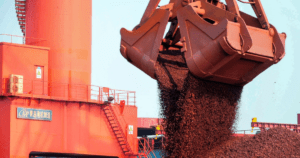
Mining enterprises of Ukraine in January-July this year reduced exports of iron ore in kind by 3.5% compared to the same period last year, to 26.08 million tonnes.
According to statistics released by the State Customs Service on Wednesday, during the specified period, foreign exchange earnings from iron ore exports increased 2.15-fold, to $4.695 billion.
Iron ore was exported mainly to China (45.8% of supplies in monetary terms), the Czech Republic (9.47%) and Austria (8.09%).
In January-July 2021, iron ore was imported to Ukraine for $130,000 in a total volume of 1,134 tonnes, while in January-July 2020, 84 tonnes iron ore for $42,000 was imported.
In January-July 2021, iron ore was imported from Egypt (79.23%), Poland (10%) and Russia (3.85%).
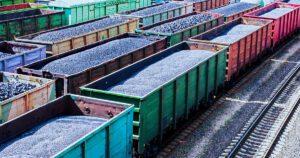
Mining enterprises of Ukraine in January-May this year reduced exports of iron ore raw materials (iron ore) in quantity terms by 1.8% compared to the same period last year, to 18.536 million tonnes.
According to statistics released by the State Customs Service on Wednesday, during the specified period, foreign exchange earnings from iron ore exports increased 2.1-fold, to $3.132 billion.
Iron ore was exported mainly to China (45.44% of supplies in monetary terms), the Czech Republic (9.41%) and Austria (8.36%).
In January-May 2021, iron ore was imported to Ukraine for $127,000 in a total volume of 1,130 tonnes, while in January-May 2020, iron ore was imported from the Netherlands for $28,000, from Sweden for $10,000, from Germany for $1,000 and from Hungary $1,000 in the total volume of 84 tonnes.
In January-May 2021, iron ore was imported from Egypt (81.75%), Poland (10.32%) and Chile (2.38%).
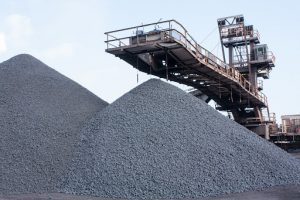
Inhulets Mining and Processing Plant (Kryvy Rih, Dnipropetrovsk region), part of Metinvest Group, in 2020 increased output of iron ore concentrate by 4% compared to 2019, to 12.858 million tonnes.
According to the audited consolidated financial results released by the company on Tuesday, work was carried out last year to modernize the transport infrastructure.
Completion of the construction of a new cyclical flow technology at Inhulets plant is planned in the second half of 2021.
The enterprise specializes in extraction and processing of ferruginous quartzites of Inhulets deposit, located in the southern part of the Kryvy Rih iron ore basin. It produces two types of iron ore concentrate with an iron content of 64.8% and 67%.
The production capacity is 14 million tonnes of iron ore concentrate per year.
Inhulets Mining and Processing Plant is part of Metinvest Group, the main shareholders of which are PrJSC System Capital Management (SCM, Donetsk, 71.24%) and the Smart-Holding (23.76%).
Metinvest Group’s management company is Metinvest Holding LLC.
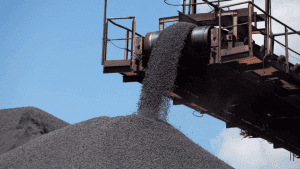
Ferrexpo plc, whose main assets are Ukrainian iron ore producers Poltava and Yeristovo mining and processing plants, raised iron ore pellet production 4.6% year-on-year in H1, 2020, to 5.598 million tonnes, the company said in a press release.
Output of pellets with 65% Fe-content grew 7.1% year-on-year, to 5.5 million tonnes while output 62% Fe fell 54.4%, to 98,000 tonnes.
Ferrexpo did not produce pellets from third-party feedstock.
Pellet production rose 5.4% quarter-on-quarter in Q2, 2020, to 2.873 million tonnes, including 2.848 million tonnes of 65% Fe, up 7.4%, and 24,700 tonnes of 62% Fe, down 66.3%.
The company’s facilities “continue to operate with minimal impact on operations to date, and the company continues to closely monitor its workforce,” Ferrexpo said in a COVID-19 update. “The infection rate in the local communities surrounding the company’s operations remains low,” it said.
The London-listed Ferrexpo plc owns 100% of Ferrexpo AG, which owns 100% of each of Poltava Mining and Yeristovo Mining and 99.9% of Belanovo Mining. Ferrexpo’s main customers are steelmakers in Austria, Germany, Japan, South Korea, Taiwan, China, Slovakia, the Czech Republic, Turkey, Vietnam and the United States. Pellet production grew 0.8% to 10.519 million tonnes on 2019.
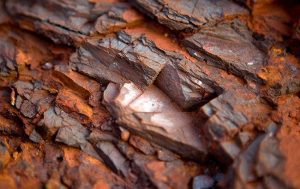
Mining enterprises of Ukraine in January-May 2020 increased the export of iron ore raw materials in natural units by 11.9% compared to the same period of 2019, to 18.875 million tonnes.
According to statistics released by the State Customs Service, foreign exchange earnings from iron ore raw materials exports increased by 5.7%, to $1.51 billion over that period.
Iron ore raw materials were exported mainly to China (58.06% of supplies in monetary terms), Poland (10.07%) and the Czech Republic (6.87%).
Iron ore raw materials imported to Ukraine from the Netherlands to Ukraine amounted to $28,000, from Sweden, to some $10,000, from Germany to some $1,000 and from Hungary to some $1,000 in a total volume of 84 tonnes over two months of 2020, while 45 tonnes of iron ore with cost of $24,000 were imported in January-May 2019.
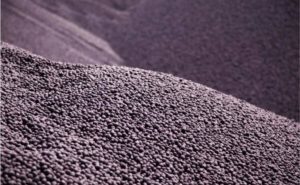
Canada’s Black Iron, implementing the investment project to create a new iron ore production facility in Kryvy Rih (Dnipropetrovsk region), has said that it received expressions of interest from European banks and export credit agencies to provide $250 to $300 million of debt.
The company said in a press release that Black Iron management continue to make sound progress arranging the financing for Shymanivske project construction.
Construction of phase one to produce four million tonnes per year of 68% iron content pellet feed is estimated to cost $436 million, as further detailed in Black Iron’s most recent Preliminary Economic Assessment. As is typical for financing the development of mining projects, based on discussions with potential investors and financiers, the company estimates that some $175 million (40%) will be equity and the balance around $261 million (60%) financed as debt, not including financing charges and working capital.
Black Iron CEO Matt Simpson said that strong interest from well known, highly regarded, providers of debt financing for project construction is seen.
“The indicative interest rates, grace period prior to starting repayment and loan duration in the expressions of interest received by the Company are very competitive. The recent announcement of the MOU between the Company and Ukraine’s government to transfer a critical parcel of land to the Company is an important milestone that both anchor offtake and debt investors have been waiting to see. The Company is currently negotiating binding terms for the land transfer, including the compensation amount, and expect this to conclude following a binding product sale (i.e. offtake) agreement as a portion of the funds invested by the offtake company will be used to cover the land transfer costs. Now that an MOU on land transfer has been reached, we look forward to commercial negotiations for project construction financing being accelerated,” he said.
Majority of the required equity for project construction is anticipated to come from offtake by a large trading company and/or steel mill that is interested to purchase Black Iron’s pellet feed on a long-term contract at a slight discount to market price in exchange for making both a prepayment and acquiring ownership in the Shymanivske project. Several multi-billion companies, including Glencore, as previously announced, are currently conducting due diligence to consider such an investment.
Additionally, there are two Asia based construction companies that have conducted site visits and expressed serious interest to invest up to $50 million of equity in kind in exchange for being awarded the construction contract.
From a sequence standpoint, discussions are being held simultaneously with equity and debt investors as both are ultimately required to fund project construction. It is likely the anchor equity and offtake investor will be announced first followed by completion of an updated feasibility study and environmental impact assessment upon which the debt financing can be secured to allow for construction start around the end of next year, the company said.